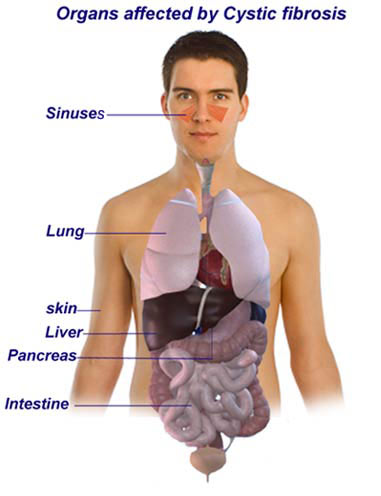Patients with CF demonstrate particularly complex host-parasite interactions involving P aeruginosa. CF is characterized by mutations in the CF transmembrane conductance regulator resulting in abnormal chloride ion secretion and cellular dehydration. A continuous cycle of cellular inflammation with increased numbers of neutrophils in bronchoalveolar lavage fluid, increased interleukin 8 secretion, viscous mucus, mucus plugging of airways, and infection results. Whether P aeruginosa infections play a role in the pathogenesis of the disease is still a matter of debate, but research has established a complex interaction.

Colonization rates for P aeruginosa increase with age and reach 60-80% for adult CF patients. One of the effects of the genetic mutation causing CF is an increase in levels of the receptor, a-sialo GM1, on respiratory epithelium. P aeruginosa isolates from CF patients who are colonized demonstrate the mucoid phenotype discussed above and form a biofilm that protects the bacteria from antibiotics, immunoglobulin, complement, and oxygen-free radicals. Conversely, strains lose the polysaccharide O side chains of lipopolysaccharide and become susceptible to complement, which prevents invasive infection and bacteremia. Motility is lost, and loss of flagella correlates with decreased nonopsonic phagocytosis. Immunoevasion is accomplished with the aid of a variety of bacterial products, especially elastase (which proteolyses immunoglobulin, complement, and cytokines) and cytotoxin (which induces T-lymphocyte, macrophage, and neutrophil cytotoxicity).
Colonization is facilitated by prior antimicrobial treatment of respiratory infections, which eradicates existing respiratory flora. Acute exacerbations with productive cough caused by bronchitis or pneumonia occur and are associated with further reduction of respiratory reserve. Fever is usually absent. Antimicrobial treatment of acute exacerbations is necessary, although eradication of the carrier state does not usually occur. Prophylactic or suppressive antimicrobial therapy has not been demonstrated to be efficacious; however, intermittent antipseudomonal therapy, including the use of nebulized antimicrobial agents, in particular, tobramycin, improves pulmonary function and decreases exacerbation of infection. Chest physiotherapy is essential in limiting infections. Ultimately, respiratory failure may lead to heart-lung or double lung transplantation, and P aeruginosa infection contributes to the high morbidity and mortality associated with transplantation in this population.


